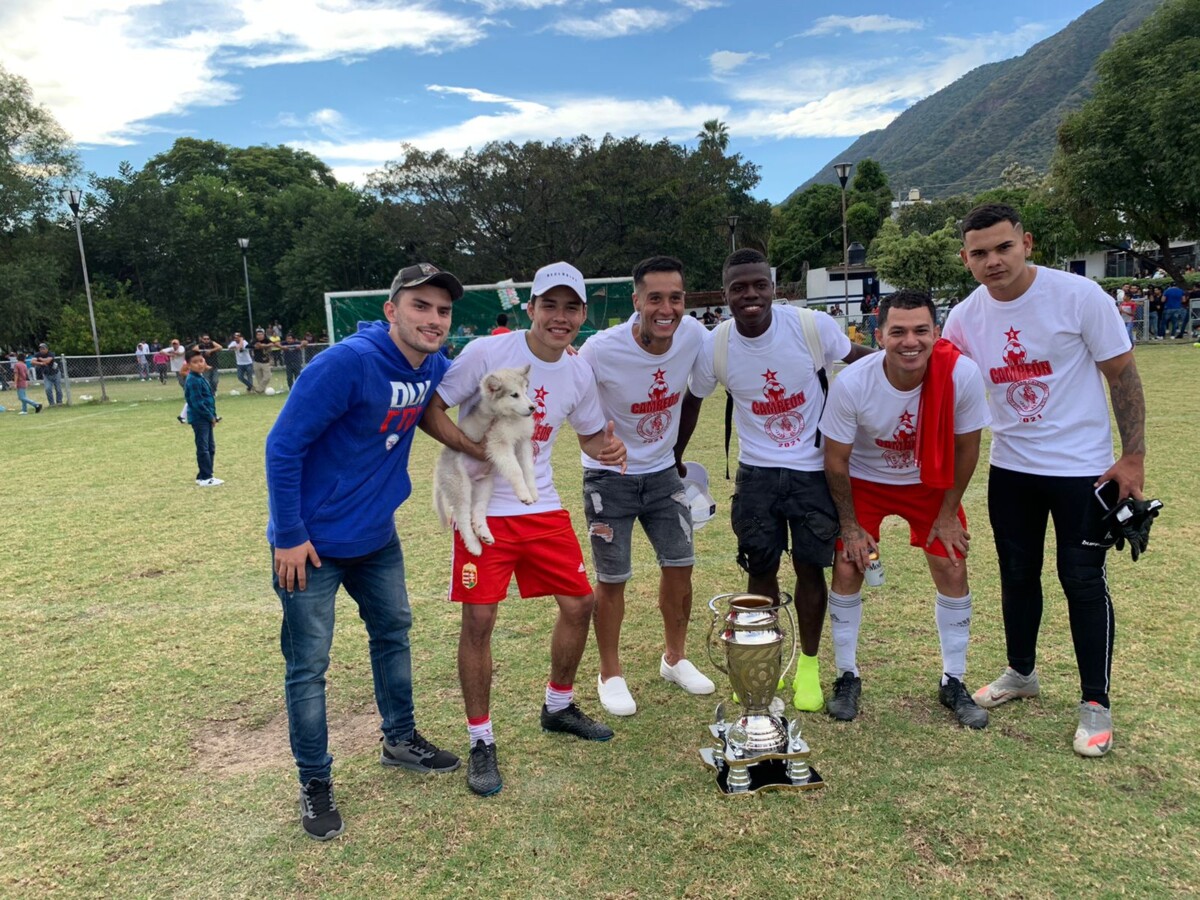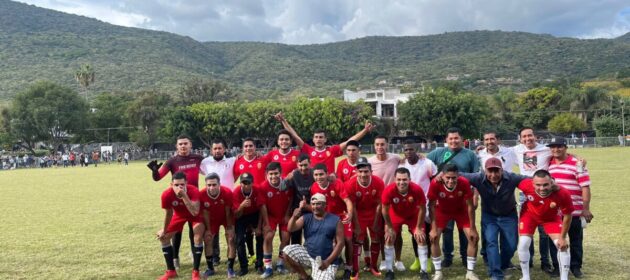Ribera Chronicles
El San Cris, «our champion.”
The champion San Cristóbal team. Photo: Courtesy of Sergio Andrés Acosta.
María del Refugio Reynozo Medina — “San Cristóbal is a loving town,” says Giovanni López, the Colombian soccer player who participated in the last game of the 2021 season at La Ribera.
October 31 was just the final episode in a series of encounters between players, sponsors and fans. The 2020-2021 season, which began more than six months ago, involved encounters between the main towns of La Ribera (El Chante, El Tepehuaje, San Juan Cosalá, Jocotepec).
The grand finale was scheduled for October 31. The only ones to arrive were the Escombro team from El Chante and the San Cristóbal team from the town of San Cristóbal Zapotitlán. During the match, fans shouted “San Cris, San Cris!”until they were hoarse. They focused on the ball as they gulped from their cans of beer. Referees’ whistles resounded in the green field and the players’ bodies moved lightly under the midday sun.
At the end of a season with months of effort, the reds of “San Cris” had defeated Chapulines and Pumas from Jocotepec. They also defeated El Nacional, El Nuevo Nacional and El Júpiter, all from Nextipac.
With the shout of ¡goooool! and the noise of the fans, the San Cristóbal team was crowned champion and received the shiny cup in the middle of the field. They also received a prize of 12,000 pesos.

Wearing the red and white uniform of the San Cristóbal team. From left to right: Cristian Domínguez, Sergio Acosta, Neisser Valverde, Giovanni López and Osmar Steven. Photo: Courtesy of Sergio Andrés Acosta
After leaving the El Chante field, they returned to San Cristobal to participate in the celebration.
The arrival of the vehicles with the fans was accompanied by the sound of honking horns and shouts of joy along the main streets. Families gathered on street corners or outside their homes to watch the contingent pass by, heading first to the cemetery.
“We dedicate this victory to Luis Gómez “El Padrecito,” said one of the organizers with emotion. Luis passed away in November of last year and was a great promoter, director and soccer fan. The tribute was also for José Luis de la Luz, and his son of the same name. Both lost their lives in an accident and were important and beloved members of the soccer community.
At twilight, the caravan arrived at the cemetery led by a band playing “Un puño de tierra.”
Because it was the eve of Day of the Dead, many of the graves were freshly decorated with flowers and papel picado bows. Team members let the trophy rest for a few minutes on the grave of Luis Gómez, and the crowd sang with fervor as the grave turned into an altar. They said goodbye with “El muchacho alegre” and advanced to the tomb of the Luises, whom the fans remember as “El Catrín” and “El ruso,” to whom they dedicated another song.

Germán Balmori with Germán Balmori Jr. One of the main promoters of the San Cristobal team. Photo: Courtesy of Diego Reynoso Aldrete.
The celebration lasted until late into the night in the lounge on the shore of the lake, where there was dinner and more music. The host was Germán Balmori, who has also been a team collaborator for many years. Elías García called the players to the stage to cheer them: Diego Reynoso, who played as right back; Osmar Steven, Colombian goalkeeper; Alonso Chavarría Bautista; Ángel Valdez; Colombians Cristian Domínguez, Neiser Valverde, Sergio Andrés Acosta and Giovanni López; Jorge Navarro El mosquita; Abraham Ibarra; and Oscar Cabañas.
The attendees immortalized the triumph with red and white t-shirts, some of which bore the names of the honorees; Russian, catrin with the image of the patron saint Señor San Cristobal.
“I wanted to give the victory to my team,” said Technical Director Isaías García Godoy. The final score of the championship game was 4-2, giving the team a season record of 6-3. With this, “El Sancris,” in the words of a fan, became not only champion, but also our champion.
Translated by Mike Rogers
Los comentarios están cerrados.
© 2016. Todos los derechos reservados. Semanario de la Ribera de Chapala








